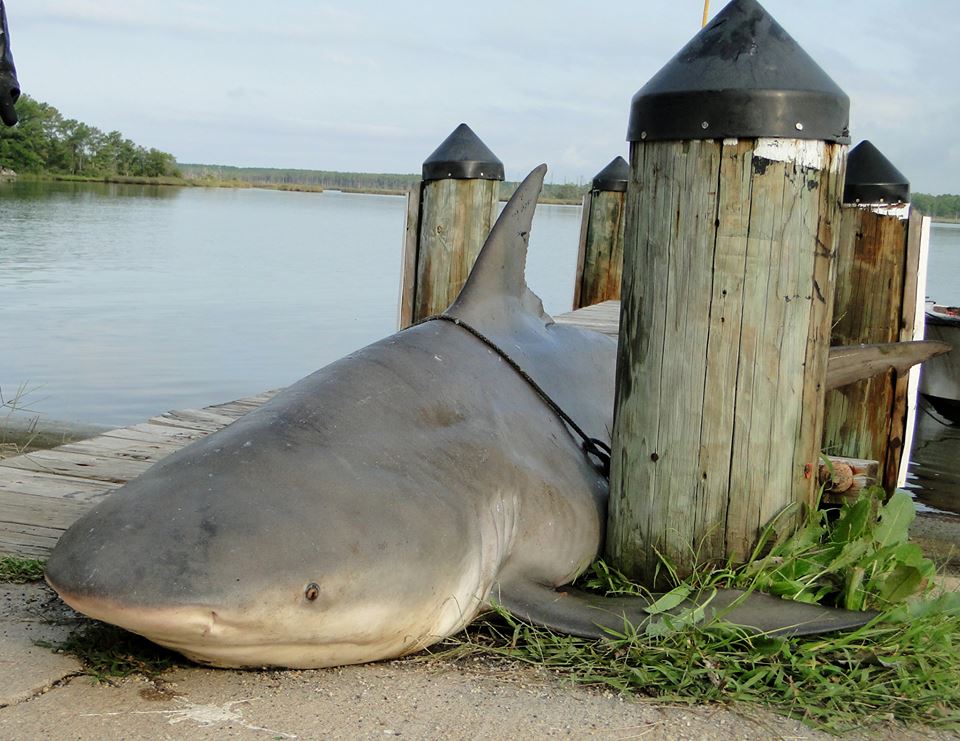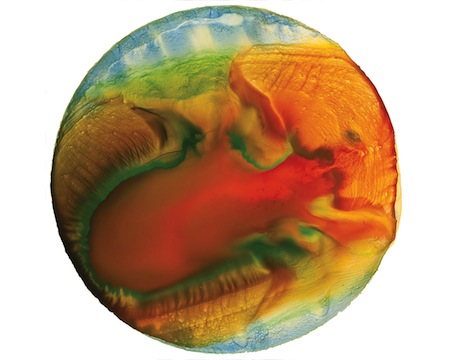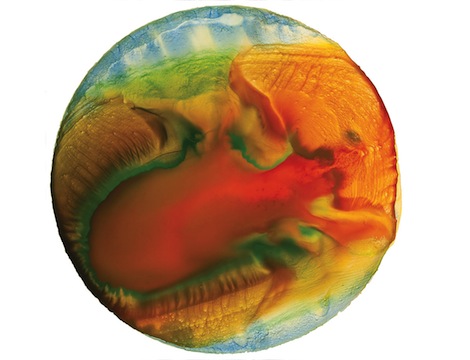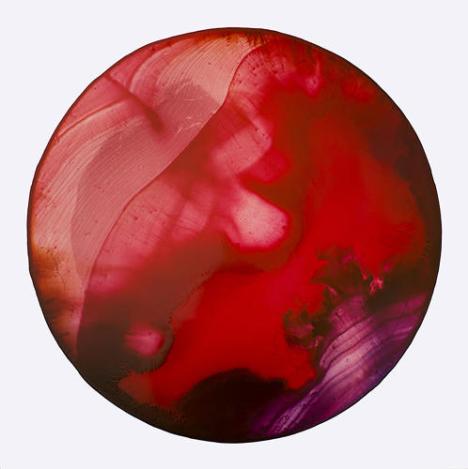The painting above was made with paint that came from a much, much uglier source: the “highly acidic high iron content” run-off from abandoned mines in Ohio.
For years, the sludge has been draining into a stream. But two Ohio University professors are collaborating on a project to clean up the water — and make the sludge earn its keep — by selling it as paint. New Scientist reports:
[Environmental engineer Guy] Riefler saw something beautiful in the muck. “I was coming back from rivers with stained socks,” says Riefler. “Most pigments are iron-based anyway, and we thought that we could use this water to create paints.”
According to FastCoExist, about 4,000 pounds of iron dump into the river every single day, more than enough to turn into something useful. And after years of working on the formula, Riefler’s close to having a finished product. FastCoExist:
The line of pigment he’s currently working on is about 97% iron, and ranges “from orange to yellow to brown to deep red to black.” Riefler has also worked with local artist and art professor John Sabraw to come up with the right formulations, which Sabraw incorporates in huge canvas paintings that depict endangered islands and estuaries across the globe.
Like the one above. Or this one:
They’re sort of like those pools of bright, shimmering oil you see at gas stations, but actually art. And beneficial to the environment, instead of harmful. It’s the prettiest use of pollution we’ve ever seen.





